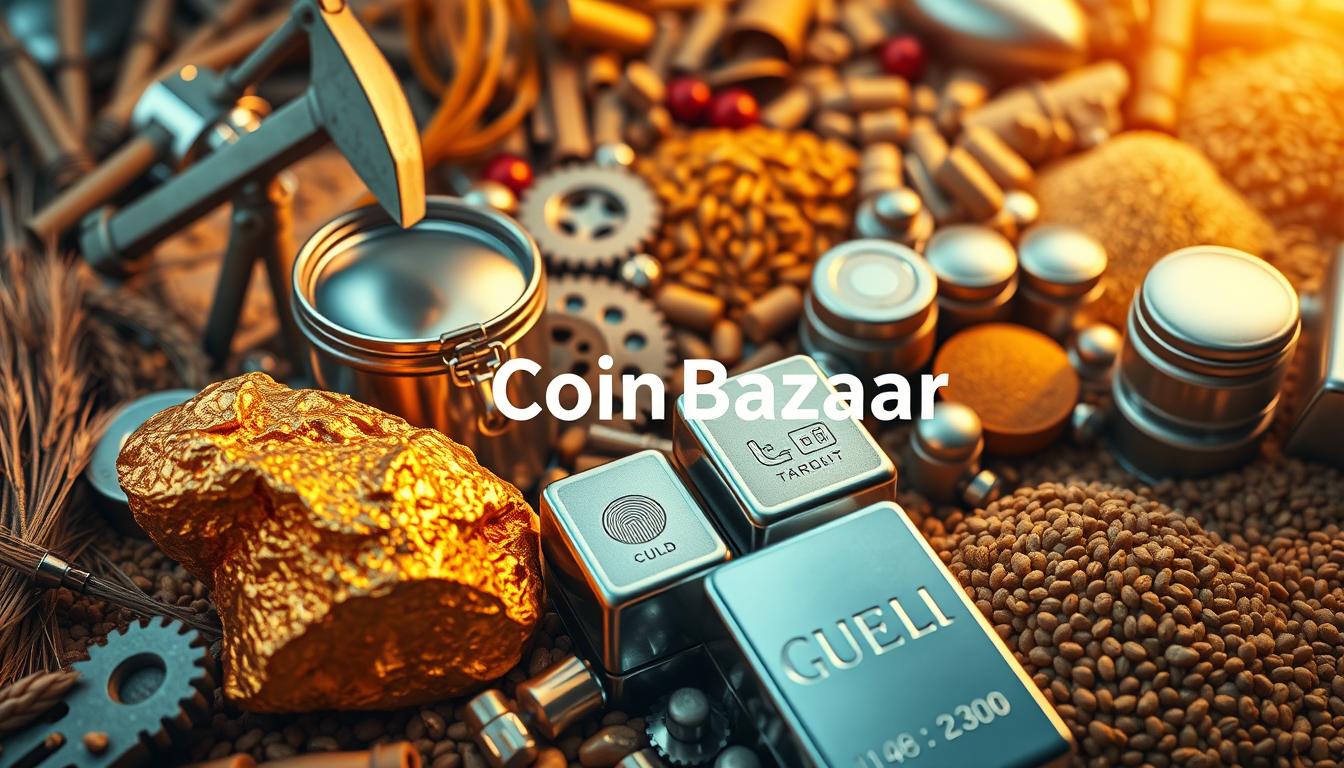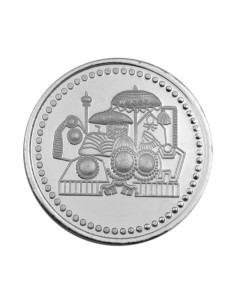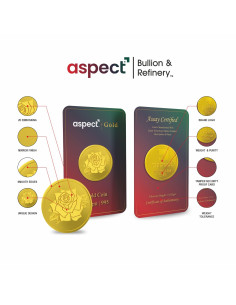Exclusive Deals & Trending Items
Knowing how different commodities affect each other is vital for smart investing. The world of commodities is complex. Many factors influence their prices.
Tapan Patel’s analysis on commodity prices and trends highlights the importance of precious metal interaction. The way gold interacts with commodities like crude oil and silver is crucial. It can greatly affect your investment portfolio.
By looking into these commodity relationships, you’ll learn a lot about the world of commodities.
Key Takeaways
- Understanding commodity interactions is key to informed investment decisions.
- Precious metals like gold have significant interactions with other commodities.
- Crude oil prices can influence the value of other commodities.
- Silver and gold often show correlated market behaviors.
- Commodity relationships can impact investment portfolio performance.
The Unique Position of Gold in the Commodity Market
Gold has been key in economies for centuries. It’s a store of value and a medium of exchange. It also symbolizes wealth and power across cultures. To understand gold’s role, we must look at its history and its roles as both a commodity and currency.
Gold’s Historical Significance as a Store of Value
Gold’s role as a store of value is unmatched. It has been used in coins and jewelry for thousands of years, keeping its value. Dr. Anil Kumar Kanungo and Puneet Dang found that gold keeps its value when the economy is uncertain. Investors often choose gold during economic troubles, making it vital for a balanced portfolio.
Gold’s importance comes from several factors:
- Its rarity and durability
- The ease with which it can be minted into coins or bars
- Its aesthetic appeal and industrial uses
Gold’s Dual Role as Commodity and Currency
Gold is unique because it acts as both a commodity and a currency. As a commodity, it’s used in electronics and dentistry because of its conductivity and corrosion resistance. As a currency, central banks hold it as a reserve asset. This makes gold’s value a good alternative to traditional currencies. Its dual role boosts its liquidity and demand, making it special in the commodity market.
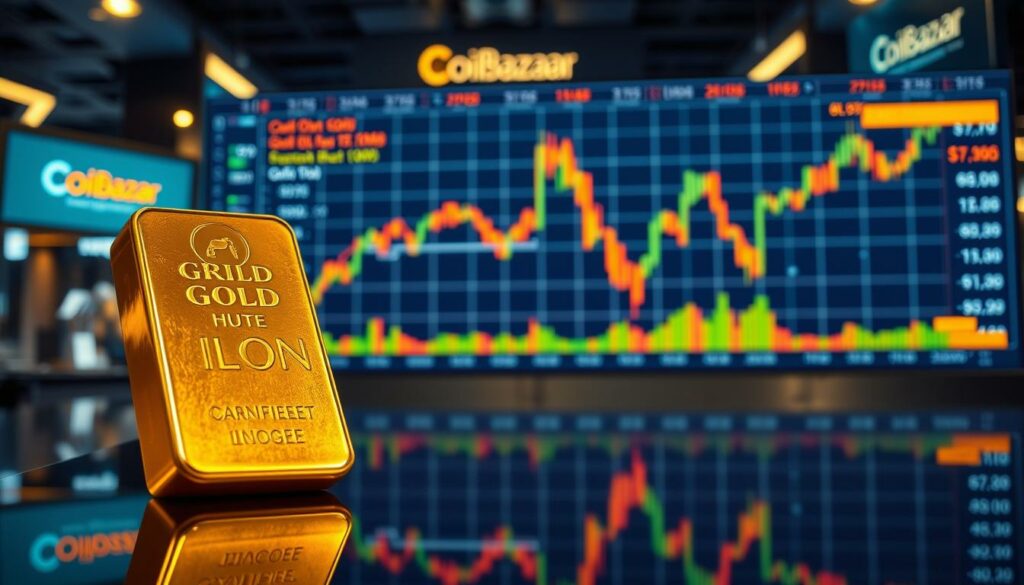

Understanding Commodity Correlations and Their Importance
As an investor, knowing about commodity correlations is key. These correlations show how different commodities’ prices move together. It’s vital for smart investment choices and risk management.
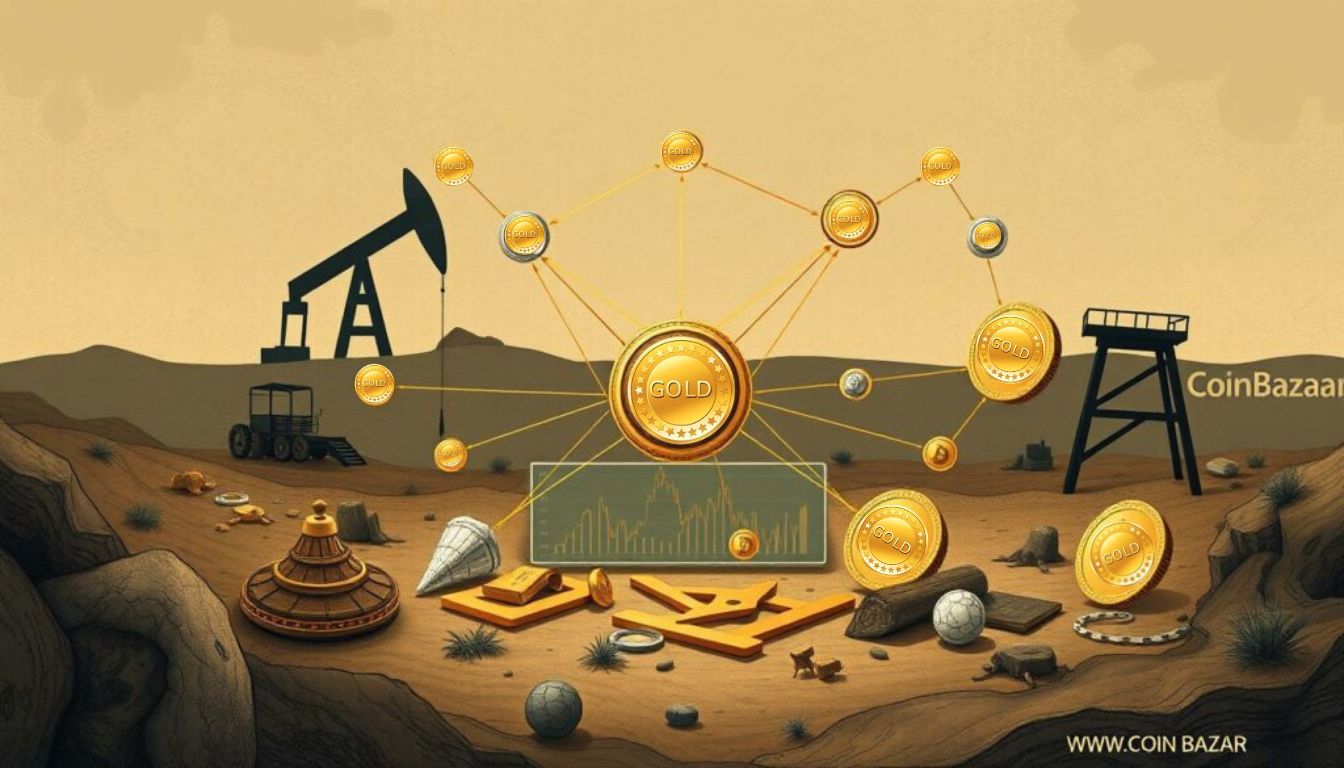

What Correlation Means in Financial Markets
In financial markets, correlation shows how two commodities’ prices move together. If they move in the same direction, it’s a positive correlation. If they move opposite to each other, it’s negative. For example, gold and silver often move together because they’re seen as safe during economic troubles.
Correlation does not imply causation; it just shows a statistical link between two commodities’ price movements. Knowing this can help investors spread out their investments and make better choices.
Why Commodity Correlations Matter for Indian Investors
For Indian investors, commodity correlations are crucial. India relies a lot on imported goods like crude oil. The link between gold and crude oil can hint at inflation and economic stability. By understanding these links, Indian investors can handle the complex commodity market better.
Also, commodity correlations affect the performance of investment tools like mutual funds and ETFs. By keeping up with these correlations, Indian investors can improve their investment plans to reach their financial targets.
Gold and Crude Oil: The Inflation Connection
The relationship between gold and crude oil prices is key for investors, especially when inflation is high. Knowing this connection helps you make better choices in the commodity market.
Historical Price Relationship Between Gold and Oil
Gold and crude oil prices often move together, especially when inflation is high. When oil prices go up, it can make production costs higher in many industries, pushing inflation up. As people worry about inflation, they turn to gold, which can increase its price. This pattern has been seen in past economic times when both gold and oil prices rose with inflation.
How Oil Price Shocks Affect Gold Valuations in Indian Markets
Oil price shocks can greatly affect gold prices in India. India, being a big oil importer, is very sensitive to oil price changes worldwide. When oil prices jump, it can make the Indian Rupee weaker against the US Dollar. This makes imports costlier, leading to higher inflation. This situation can make gold prices go up as investors look to protect themselves from inflation and currency loss. It’s important for you to understand this to do well in the Indian commodity market.
The Gold-Silver Ratio: A Key Market Indicator
The gold-silver ratio is a key indicator in the market. It shows how many ounces of silver it takes to buy one ounce of gold. This ratio helps investors and traders see the value of gold and silver.
Understanding the Gold-Silver Ratio
To find the gold-silver ratio, you divide the price of gold by the price of silver. For example, if gold is ₹50,000 per ounce and silver is ₹5,000, the ratio is 10:1. This means you need 10 ounces of silver to get one ounce of gold. Investors use this ratio to figure out if gold or silver is cheaper.
Historical Patterns in the Gold-Silver Ratio
The gold-silver ratio has changed a lot over time. In ancient times, it was around 12:1 or 13:1. It has changed due to supply and demand, economic conditions, and market feelings. Looking at these patterns can help predict future changes.
Using the Ratio for Investment Decisions in India
Indian investors can use the gold-silver ratio to make smart choices. For instance, a high ratio might mean silver is cheaper than gold, making it a good time to buy silver. On the other hand, a low ratio could mean gold is cheaper. By watching the gold-silver ratio, investors can find good deals.
Knowing and using the gold-silver ratio is a smart strategy for investors in India. It helps them understand the precious metals market better.
Gold Interacts with Base Metals: Copper, Aluminum, and Zinc
Gold’s interaction with base metals like copper, aluminum, and zinc gives us insights into market trends. As an investor, knowing these dynamics helps you make better choices.
Industrial Demand Factors and Economic Indicators
The demand for base metals like copper, aluminum, and zinc is linked to industrial activity. Copper is key for the electrical industry, while aluminum is used a lot in transportation and packaging. Keep an eye on these sectors to understand metal demand.
Economic signs like GDP growth and infrastructure spending also impact metal prices. A growing economy means more demand for these metals, which can influence gold prices.
Gold Alloy Compatibility with Base Metals
Gold is mixed with base metals to make it stronger and more durable. Gold’s mix with metals like copper and zinc is well-known. For example, rose gold is made by adding copper to gold, and green gold is made with silver and sometimes zinc.
Knowing how gold works with base metals is key for many uses, like making jewelry and electronics. This knowledge helps you invest in gold and related items more wisely.
Beneficial Properties of Gold That Influence Its Commodity Status
Gold’s special properties are key to understanding its value. It’s not just a valuable metal. Its chemical stability, resistance to corrosion, and conductivity are crucial. These traits boost its worth in the market and its uses in industry.
Gold’s Chemical Stability and Corrosion Resistance
Gold is famous for its chemical stability and corrosion resistance. These qualities make it perfect for many uses, like in electronics and dentistry. Its ability to resist corrosion means it stays strong and keeps its value.
The table below shows some important chemical properties of gold.
| Property | Description | Benefit |
|---|---|---|
| Chemical Stability | Resistant to chemical reactions | Durable and long-lasting |
| Corrosion Resistance | Does not react with acids or oxygen | Maintains value and usability |
Conductivity and Industrial Applications
Gold is a top-notch conductor of electricity. This makes it very valuable for industrial applications, especially in electronics. Its ability to be shaped easily also makes it great for many uses, from jewelry to electronic parts.
As technology gets better, the need for gold in industry keeps rising. This affects its status as a commodity.
The Dollar Factor: How Currency Movements Affect Gold and Commodities
Currency movements, especially with the US dollar, greatly affect gold and commodity values. The US dollar’s changes can make gold and other commodities more or less appealing to investors around the world.
The Inverse Relationship Between USD and Gold
The US dollar and gold have always moved in opposite directions. When the dollar gets stronger, gold prices usually drop. This is because a stronger dollar makes gold more expensive for people outside the US, which can lower demand.
On the other hand, a weaker dollar makes gold cheaper for investors with other currencies. This can increase gold prices.
“The dollar’s impact on gold is a critical consideration for investors,” says a financial expert. “Knowing this can help investors make better choices about gold and other commodities.”
INR-USD Exchange Rate Effects on Indian Gold Prices
In India, the INR-USD exchange rate is key to gold prices. A weaker INR against the USD can make gold more expensive in India. This is because gold prices are set in USD, so a weaker INR means more rupees are needed to buy the same amount of gold.
Indian investors should watch both global gold prices and the INR-USD exchange rate closely. This helps them predict gold price changes and make smarter investment choices.
Interest Rates and Their Impact on Gold-Commodity Relationships
Understanding how interest rates affect gold and other commodities is key for investors. Interest rates play a big role in the global economy. They influence the price of gold and its relationship with other commodities.
Interest rates can change how attractive gold is as an investment. When rates go up, holding gold becomes less appealing. This can lower its price. But when rates are low, gold becomes more attractive. This is because holding it costs less.
The Opportunity Cost Theory
The opportunity cost theory explains this. When interest rates are high, you can earn more from other investments. This makes gold less appealing. But when rates are low, gold becomes more attractive. It’s seen as a safe place to keep money and a hedge against inflation.
- High Interest Rates: Increased opportunity cost, potentially lowering gold prices.
- Low Interest Rates: Reduced opportunity cost, potentially increasing gold prices.
RBI Policies and Their Effect on Gold Investments
The Reserve Bank of India’s (RBI) policies, including interest rates, greatly affect gold investments in India. For example, if the RBI lowers interest rates, gold might become more appealing to Indian investors.
Some important factors to think about include:
- The RBI’s inflation targeting framework and its impact on interest rates.
- How changes in interest rates affect the INR-USD exchange rate and gold prices.
- The overall economic conditions and how they influence investor sentiment towards gold.
Gold During Commodity Supercycles
The link between gold and commodity supercycles is intricate. It’s vital for investors to grasp these connections. This knowledge helps in making better investment choices.
Commodity supercycles are long periods of rising commodity prices. They’re often triggered by big economic events or shifts in demand. Spotting these cycles is key for those aiming to profit from market trends.
Identifying Commodity Supercycles
To spot commodity supercycles, look at long-term price trends. Economic signs like GDP growth and tech advancements are also important. They shape these cycles.
- Analyze historical price trends
- Watch economic indicators
- Understand demand and supply
Gold’s Performance During Different Cycle Phases
Gold’s performance changes with the cycle phase. In the growth phase, it sees more demand for safe assets. But in downturns, demand drops, and investor views shift.
Knowing how gold acts in each cycle phase helps investors. It aids in navigating the complex commodity market. This knowledge leads to smarter investment choices.
Gold Surface Interactions and Reactivity Studies in Commodity Markets
Gold’s unique physical properties greatly affect how it interacts and reacts in different market conditions. You might be curious about how these properties impact gold’s behavior in commodity markets. Let’s explore the details.
How Gold’s Physical Properties Affect Its Market Behavior
Gold’s high ductility and conductivity make it valuable in many industries. Its chemical stability and resistance to corrosion also boost its market value. So, gold’s market behavior is influenced not just by its role as a store of value but also by its industrial demand.
The table below shows some key physical properties of gold and their effects on its market behavior:
| Physical Property | Market Implication |
|---|---|
| High Ductility | Increased demand in electronics and jewelry manufacturing |
| Chemical Stability | Enhanced value due to resistance to corrosion |
| Conductivity | Greater industrial demand for electrical applications |
Gold Compound Reactions and Their Industrial Significance
Gold compound reactions, like those involving gold chloride or gold cyanide, are key in many industrial processes. These compounds are used in electroplating, catalysis, and pharmaceutical applications. The demand for these compounds can shape gold’s market dynamics, especially in areas with lots of industrial activity.
Understanding gold’s surface interactions and reactivity is key for investors and industries. By knowing how gold’s physical properties and compound reactions impact its market behavior, you can make better decisions in commodity markets.
The Indian Perspective: Gold’s Cultural and Economic Importance
In India, gold is more than just a valuable metal. It’s a big part of the culture and daily life. Gold’s role goes beyond its value, touching many areas like cultural events and financial choices.
Wedding Season Demand and Price Patterns
The demand for gold in India goes up during the wedding season, from October to December. This is because of a tradition where gold jewelry is given to brides. Because of this, gold prices often go up during this time.
Monsoon Cycle and Agricultural Commodity Connection
The monsoon season greatly affects India’s farming, which impacts the economy and gold demand. A good monsoon means more crops, higher incomes for farmers, and possibly more gold bought. But a bad monsoon can hurt the economy and lower gold demand.
Government Policies and Their Market Impact
Government policies, like import duties on gold, shape the gold market in India. For example, changes in these duties can make gold more or less appealing to investors. Knowing these policies is key for those investing in Indian gold.
Gold’s cultural and economic role in India shows its special place in society and economy. So, it’s important for investors and others to understand these aspects.
Digital Gold and Commodity Trading: Modern Market Dynamics
The Indian commodity market is changing fast with digital gold. This change is because of new technology and the need for easier, safer investments.
Digital gold lets investors buy and keep gold without physical storage. This makes trading easier and safer.
ETFs and Their Influence on Correlations
Exchange-Traded Funds (ETFs) are now a top choice for gold investment. ETFs let investors buy gold without getting physical gold. This makes investing in gold easy. ETFs also affect gold prices and how they relate to other commodities.
The table below shows how gold ETFs relate to other commodities:
| Commodity | Correlation with Gold ETFs |
|---|---|
| Crude Oil | 0.5 |
| Silver | 0.8 |
| Copper | 0.4 |
Sovereign Gold Bonds and Their Popularity in India
Sovereign Gold Bonds (SGBs) are getting more popular in India. They offer a safe and attractive alternative to physical gold. SGBs are issued by the Reserve Bank of India (RBI) for the Government of India.
The benefits of SGBs include:
- Higher returns compared to physical gold
- No storage costs or security concerns
- Eligible for loan collateral
Portfolio Diversification: Using Gold-Commodity Correlations to Your Advantage
Indian investors can improve their portfolios by understanding gold and other commodities. Gold-commodity correlations are key to diversifying. They help in making better investment choices.
Optimal Allocation Strategies for Indian Investors
To diversify well, consider these strategies:
- Diversify across different commodities to reduce risk
- Know the past links between gold and other commodities to spot trends
- Change your investments based on market trends to boost returns
These steps can make your portfolio stronger and more likely to grow.
Rebalancing Techniques Based on Correlation Shifts
It’s important to regularly check and adjust your portfolio. Key rebalancing methods are:
- Watch for changes in gold and other commodities’ links to predict market moves
- Adjust your portfolio to keep the right mix and control risk
- Use gold-commodity links to protect against market ups and downs
By keeping up and adjusting, you can handle market changes well.
Gold Element Behavior During Market Stress
When markets are stressed, gold’s behavior offers clues about its safe haven status. As an investor, knowing how gold acts in these times is crucial. Gold is often seen as a safe haven during market ups and downs. Yet, its actions can be shaped by many factors.
Gold’s Safe Haven Status During Commodity Market Volatility
Gold’s status as a safe haven comes from its value and ease of trading in tough times. Investors often turn to gold to protect against losses in other areas. This move is based on gold’s long history as a valuable asset.
Several factors make gold a safe haven, including:
- Liquidity: Gold is easy to buy and sell.
- Perceived value: It’s viewed as a valuable asset.
- Historical significance: Gold has been a store of value for centuries.
Gold Bonding Strength with Investor Psychology
The bond between gold and investor psychology is intricate. During market stress, investors’ fear and uncertainty can push gold prices up. Grasping this connection can aid in making smarter investment choices. The “bonding strength” between gold and investor psychology is evident in how gold prices react to market mood.
Common Misconceptions About Gold and Commodity Correlations
Misunderstandings about gold and its ties to other commodities can lead to bad investment choices. It’s key to grasp these relationships well to make smart decisions.
The “Gold Always Rises with Inflation” Myth
Many think gold always goes up when inflation does. But, this isn’t always true. Gold’s performance against inflation can be affected by many things, like interest rates and currency changes. Sometimes, gold prices don’t go up with inflation if other economic factors aren’t right.
Correlation vs. Causation Errors in Commodity Analysis
Another mistake is mixing up correlation with causation in commodity studies. Just because gold and another commodity move in sync, it doesn’t mean one causes the other. It’s vital to understand what drives these correlations for accurate analysis and investment choices. Investors should be careful not to assume causation when there’s only correlation.
Knowing these misconceptions helps you improve your investment strategy. It leads to better decisions about gold and commodity correlations.
Conclusion: Navigating the Complex Web of Gold and Commodity Relationships
You now know how gold and other commodities like crude oil, silver, and base metals are connected. Many things affect their relationship, such as inflation, currency changes, and interest rates. As an Indian investor, knowing these connections can help you make better choices for your investments.
Looking at past trends and market signs, like the gold-silver ratio, can show you ways to spread out your investments. Gold’s special qualities, like its stability and ability to conduct electricity, play a big role in its value and how it moves in the market.
Understanding the complex links between gold and other commodities is key. Think about how global economic trends, government actions, and cultural factors shape the market. With this knowledge, you can create smart investment plans to reach your financial targets.






